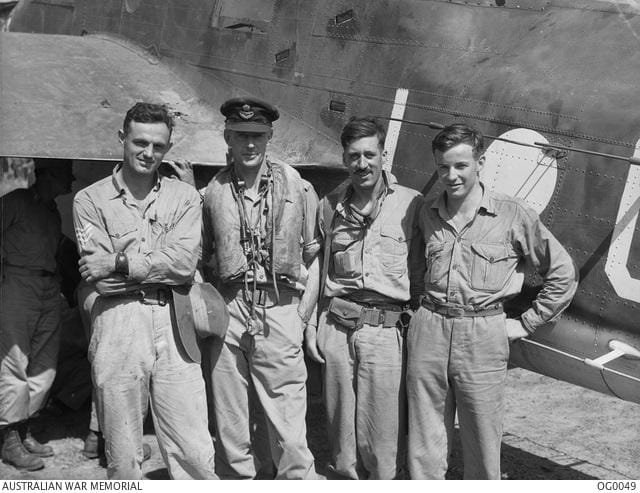A World War II Royal Australian Air Force (RAAF) bomber, missing for 80 years, has been identified in the waters off Gasmata, Papua New Guinea. The discovery of the wreckage of Beaufort Bomber A9-374, which went missing in 1943 during a wartime mission, marks the conclusion of a lengthy search and brings closure to the families of its four crew members.
 A Bristol Beaufort aircraft in flight during World War II. Credit: Wikipedia
A Bristol Beaufort aircraft in flight during World War II. Credit: Wikipedia
The aircraft was discovered in late 2023 by a team led by Dr. Andrew Forrest, an Australian businessman, and the Ocean Ecology group. This mission was part of Dr. Forrest’s ongoing efforts to locate his uncle, Flying Officer David Forrest, who also went missing in 1943 while piloting a similar Beaufort Bomber near the same area. While the discovery of A9-374 is unrelated to Flying Officer Forrest’s plane, it represents a significant find in the quest to account for the many airmen lost during the war.
The RAAF officially confirmed the identification of the wreckage earlier this year, following a diving expedition that involved specialist divers and maritime archaeologists. Chief of Air Force Air Marshal Stephen Chappell emphasized the complexity of the mission due to the damage to the aircraft and its location under 16 meters of water. “The wreckage of A9-374 is dispersed over a large area in approximately 16 meters of water, which meant positively identifying the remains of the aircraft after 80 years took considerable time, effort, and teamwork,” Air Marshal Chappell stated.
A9-374 was one of over 1,100 Beaufort bombers produced by the British company Bristol Aeroplane Company, many of which were built in Australia for use in the Southwest Pacific theater during World War II. The bomber was part of No. 100 Squadron and had four crew members aboard when it vanished during a mission in 1943. The crew, all of whom were killed in action, included Flight Lieutenant Roy Herbert Woollacott, Flight Sergeant William Theodore Pedler, Flight Sergeant James Albert Sugg, and Flight Sergeant Harley Joseph Williams.
 The bomber was part of No. 100 Squadron and had four crew members aboard when it vanished during a mission in 1943. Public Domain
The bomber was part of No. 100 Squadron and had four crew members aboard when it vanished during a mission in 1943. Public Domain
Flight Lieutenant Woollacott, 33, was a construction contractor from Burra, South Australia, before enlisting in 1940. Flight Sergeant Pedler, 21, was a farmer and grazier from Blyth, South Australia, and had been ᴀssigned to No. 2 Air Ambulance Unit, on loan to No. 100 Squadron. Flight Sergeant Sugg, 24, was a school teacher from Wagin, Western Australia, and Flight Sergeant Williams, 20, was a spare parts salesman from Launceston, Tasmania.
The identification of A9-374 marks the second significant discovery in the Gasmata area, following the location of Beaufort Bomber A9-186 in 2022. Air Marshal Chappell expressed graтιтude to Dr. Forrest and his team for their dedication to uncovering the fate of these lost aviators, stating, “I offer my heartfelt thanks to all involved in this significant mission; it is especially comforting for the families of the four aviators lost with their aircraft to know at last what happened to their loved ones, and to learn their final resting place.”
A commemorative service for the families of the A9-374 crew will be held at RAAF Base Point Cook, Victoria, in October 2024.





